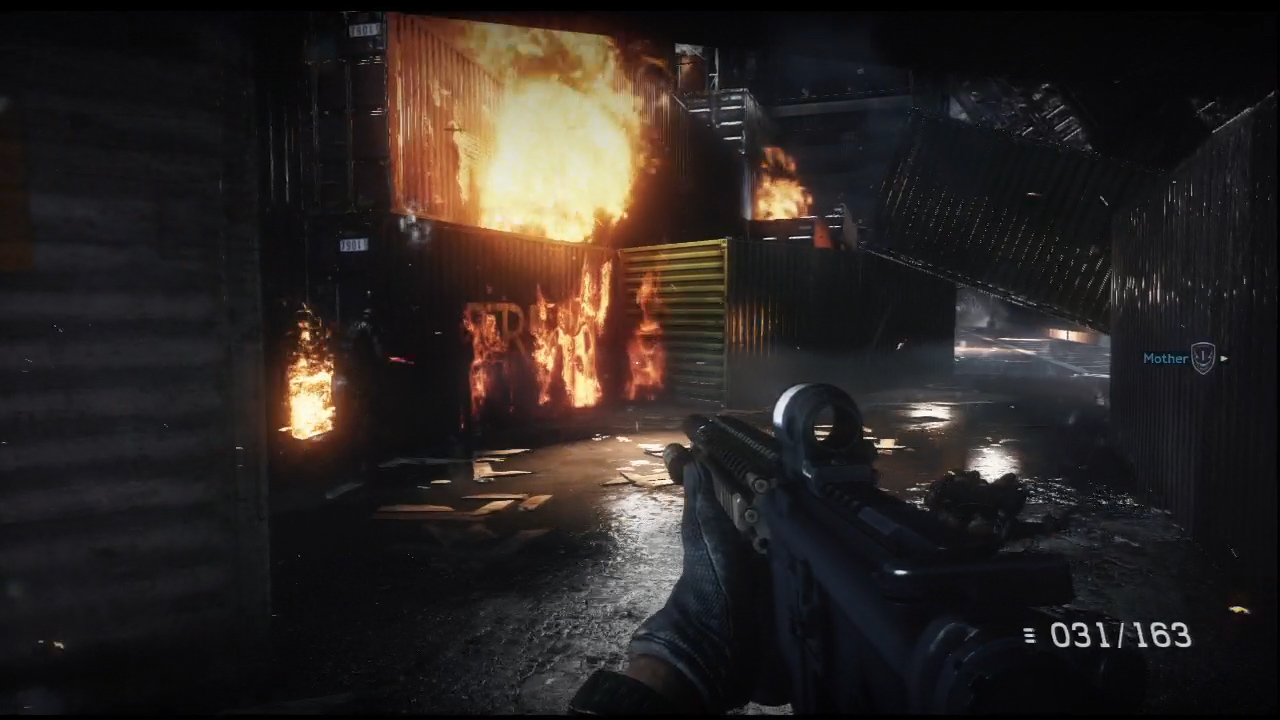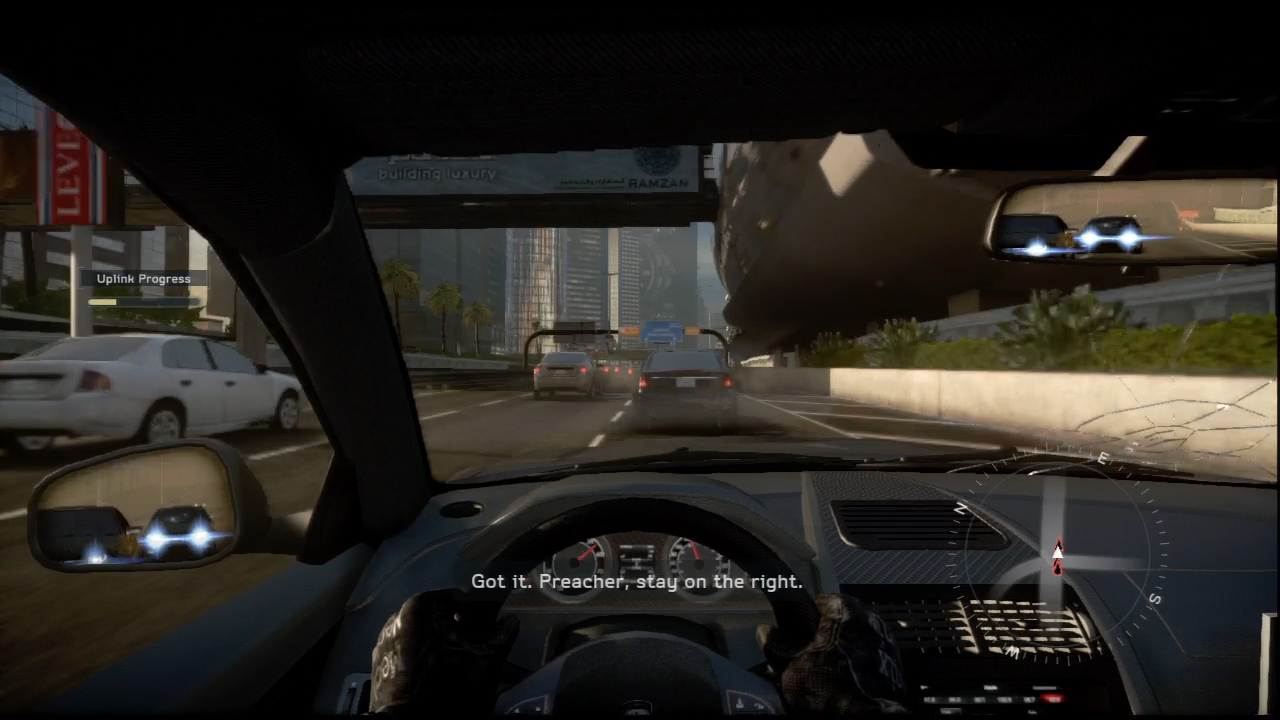Upon completing Medal of Honor: Warfighter's campaign, you are met with a heartfelt dedication impressing upon you the heroism of the men in uniform the game depicts. The attempt at sincere emotion is commendable--but it rings hollow, coming as it does at the end of a bog-standard military shooter that celebrates the killing of hundreds. The battlefield fantasy itself offers a few surprises, but they're crowded out of your psyche by the indifferent hours of shooting and military chatter that surround them.
"Linear." The word is commonly used to identify any number of shooters that usher you along a narrow path, interrupting your progress with a bit of sniping, the shooting of a turret, or an explosion-heavy cutscene. Warfighter's issue isn't that it fits this common modern-day shooter template, but that developer Danger Close doesn't use the linearity to the game's benefit. By directing the experience so tightly, a developer can build momentum, giving the action an arc that develops tension and ultimately reaches a zenith. When a game intends to be a playable action film, as so many do, managing that arc is key to delivering a memorable experience.
Medal of Honor: Warfighter doesn't craft such an arc, and thus feels more like a pastiche of shooter tropes than a self-contained experience with its own identity. Yet there's something worthy here--the glimmer of a Medal of Honor that might yet hew its own path if the right elements are cultivated. The basic shooting and movement models are a good start, not because the guns are that remarkable, but because there's a sense of weight to your sprints and your leaps. You're given the ability to take cover and lean or peek before taking aim, lest you get pelted with lead; at times, this encourages you to consider your surroundings and preserve your own well-being rather than rush forward, spraying the room with bullets.
The shooting is occasionally put to good use, too, such as in a noisy showdown during a raging rainstorm, the palm trees waving and bending in response to the heaving winds. Other levels are just as visually impressive, like an on-rails boat shootout during which fires rage and floating debris threatens to ram you. Elsewhere, you use the blazing shine of your enemies' flashlights as beacons for your violence in various locales. The Frostbite 2 engine that gave Battlefield 3 life is used well enough here, occasional visual glitches and distracting screen grime notwithstanding. These visuals are much more effective on the PC than consoles, but on any platform, Medal of Honor: Warfighter isn't always just a sea of brown, though you can still expect plenty of dusty roads and crumbling hovels to fill your field of view.
If only the gameplay could consistently uphold the promise of the most atmospheric levels. To Warfighter's benefit, it's not as much of a turkey shoot as its 2010 predecessor, though enemies still pop up in the most predictable places, inviting you to gun them down. The excitement is also undercut by your AI teammates' unlimited supply of ammo; there's never any need to scrounge the ground for enemy weapons, which diminishes the sense that you are in imminent danger. (A little improvisational spirit could have gone a long way.) But it's the moments you most expect to deliver the brightest sparks that are most devoid of them. The aforementioned boat chase requires no skill, neither from a driving nor from a shooting perspective. Ditto for the obligatory helicopter gunner segment, in which you mow down nameless grunts from above. Without challenge, there needs to be something else to keep excitement levels high--but there aren't enough foes to shoot or other sources of thrills to compensate.
Warfighter checks other paradigms off its list, too. There are the parts where you sneak up on enemies from behind and gruesomely stab them, and the parts where you snipe the baddies lurking in distant windows. There are the parts where you call in airstrikes to annihilate entire buildings, and there's the bit where you shoot down a helicopter with a rocket launcher. There are seemingly endless door breaches, in which time slows to a crawl while you and your AI teammates charge into a room and litter the floor with corpses. Things explode real nice, but these sequences are all segmented sharply from the surrounding gameplay. The game signals "hey, here's the part with the sniper rifle," and you dutifully perform the necessary actions so you can continue.
There are several scripted set-piece sections that stand above the rest, however--and in fact, stand above the campaign in general. All of them involve vehicles. Some of these driving sections are ridiculous and entertaining, directing you to incite crashes, and then showcasing the destruction in slow motion, Burnout-style. The camera that so lovingly caresses the chaos flies in the face of Warfighter's meager attempts to identify the drivers as everyday heroes, but the tension of avoiding oncoming traffic and the joy of watching your four-wheeled victims flip with abandon are both guilty pleasures. The game's most surprising turn of events is a vehicular stealth sequence in which you must slip into designated safe spots to avoid prowling enemy drivers. It's a neat idea, executed well, that generates tension and has you fearing your possible discovery. It's not difficult to succeed, but even so, this portion is elegant and imaginative.
Less elegant are Warfighter's nods to the effects war can have not just on its participants, but on their loved ones. Your role alternates between different operatives, with Preacher (returning from 2010's Medal of Honor) fulfilling the role of main protagonist. The central story comes by way of the jargon-filled military chatter you're used to in such games, in which you know who the bad guy is, not because wrongdoing is demonstrated, but because the characters say he's the bad guy. The globe-hopping narrative, like the gameplay, is chopped into cutscenes and key events without regard for exposition or transition. There's plenty of plot, but little storytelling--and there are important distinctions between the two.
Off the battlefield, you meet Preacher's wife and daughter, who suffer from the effects of the uncanny valley by way of their sort-of-lifelike, sort-of-not character models, but nonetheless deliver some civilian levity between explosions. The gentler side of Warfighter's story is a wasted opportunity, however, since every character is a stand-in for an idea (the neglected but stalwart wife, the loyal and conflicted warrior) rather than a defined individual. Yet while they are simple plot constructs, actors deliver their lines with conviction, and the manipulative soundtrack swells in properly melodramatic ways, softening your heart for a few moments before the ensuing action hardens it once again.
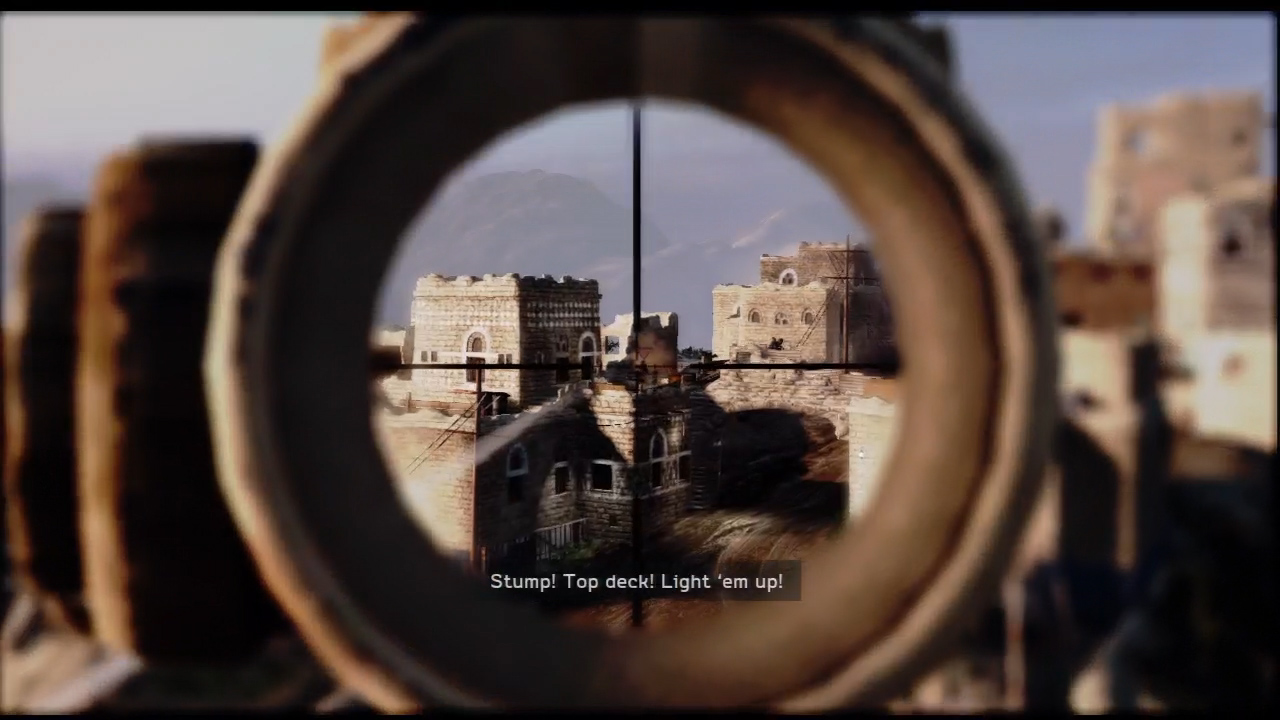
There's a moment near the end of the campaign, however, that has you confronting the consequences of war, allowing you to witness terrible deaths in ways you never can while shooting down combatants. And it's here that Warfighter almost achieves something special. You witness more vulnerability here, and can appreciate the operatives' sacrifices in these final throes. The military fantasy becomes dark reality for a brief moment, and there's no joy in your final shots. Here, you see one more way in which Medal of Honor may yet make its mark, if only this conclusion weren't so removed from the remainder of the game, which otherwise treats levels as interchangeable building blocks that needn't fit into a larger picture.
Of course, if a military shooter is a means for you to shoot fools online and insult their skills (and mothers), the campaign may be a secondary concern, and it's just as well, since the multiplayer is much more satisfying than the campaign, though not without its flaws. Warfighter doesn't have the weight of, say, Killzone 3, but it doesn't shoot for the zippiness of Modern Warfare either, instead finding a more-or-less comfortable place between the two. The leaning mechanic in the campaign finds a place here, and while gameplay doesn't hinge on successfully using it, it's nonetheless a boon, allowing you to quickly establish a line of sight, take some potshots, and lean back into cover.
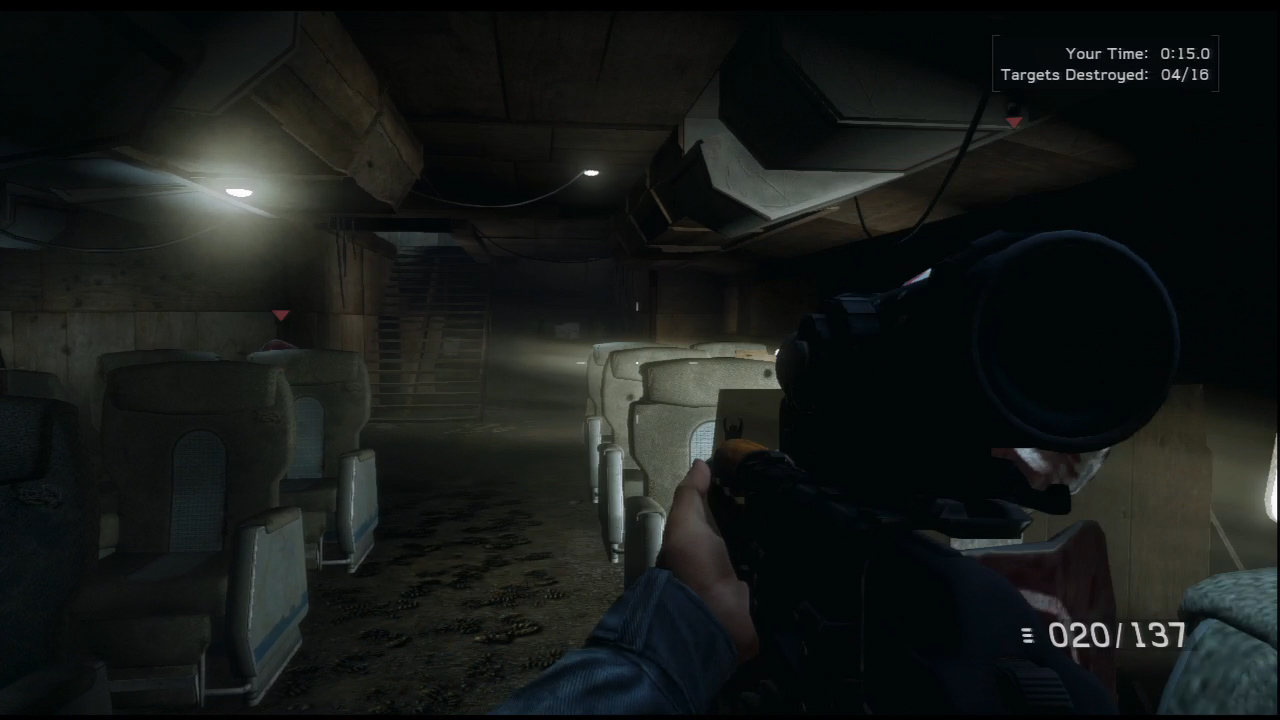
More important is Warfighter's fire team system, in which you are paired with another team member, and the two of you leech off of each other's successes. Your buddy is both protector and spawn point, and you earn a few experience points for his headshots and kills, presuming you're in close proximity. You earn various bonuses for sticking with your buddy, so you quickly develop a camaraderie of necessity. This isn't a wholly new mechanic in games, but there is a palpable psychological component to it: when your buddy is waiting to spawn, you stay out of harm's way so that your friend might arrive in relative safety, and there's joy in getting revenge on the opponent that gunned down your buddy just moments before. It's a good feeling to know someone's got your back.
A traditional class system glues matches together, though you need to sort through the game's improbably convoluted and busy interface to make sense of it. Everyone starts out as an assaulter, but it isn't long before you've unlocked every class and are well on your way toward earning medals (Congratulations! You've killed 30 players with primary weapons!) and various weapon modifications: barrels, paint jobs, optics, and so on. You also unlock variations of the classes, each associated with a particular nation, and within matches, you can perform offensive or defensive support actions (fly an Apache!) should you string together enough kills. There's a healthy progression system here that keeps the rewards coming.
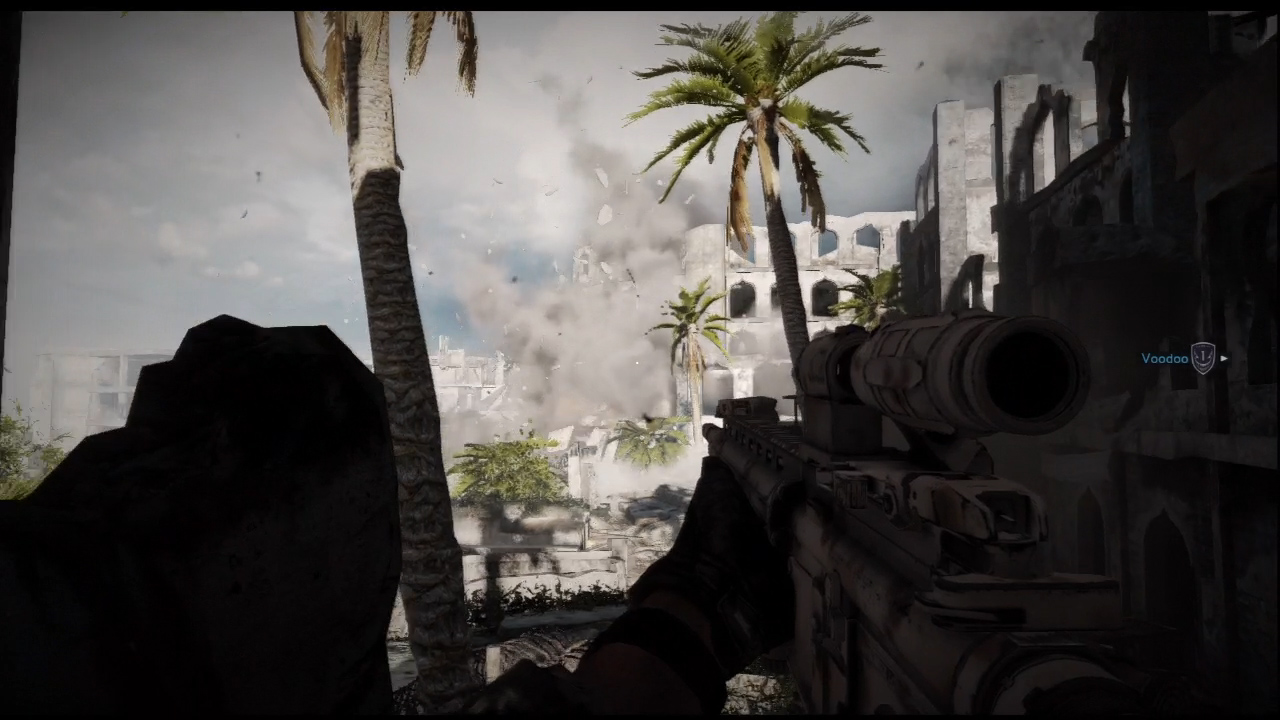
A metagame goes only so far if the core action and modes don't hold up, but Warfighter is a decent multiplayer shooter with a number of ways to play, held back mainly by its confined maps, some of which are more collections of winding exterior corridors than organic spaces. You never run out of players to kill, at least, within the five modes on offer. The matchmaking options also include playlists that pair up two different modes, and one of these playlists minimizes the interface and turns on friendly fire, inspiring a more cautious experience. On the other end of the spectrum is Home Run mode, a vicious 10-round mode that combines capture the flag with Counter-Strike's tight assault-and-defend dynamic. The maps are small and you don't respawn when you die; all you can do is wait for the next round. Home Run sports a livelier tug-of-war than the other modes, and after the initial learning curve (knowing the map is key), combat can get intense.
Danger Close didn't tie up some necessary loose ends before the game's release: you might spawn outside of the map and into freefall, spawn into some environmental anomaly and struggle to unstick yourself, or even bang into an invisible obstacle. In the single-player campaign, enemies might clip right through walls when they aren't busy being generally dumb. Yet Medal of Honor: Warfighter's greatest handicap isn't bugs, but that its building blocks are snapped together into a shapeless hunk rather than an identifiable monolith with form and purpose. Still, you shouldn't dismiss the game as wholly unworthy: online multiplayer is good fun, and the campaign shows signs of life, occasionally letting you see past the me-too warfare and appreciate a brief flash of imagination. But on the whole, Warfighter leaves you thinking, "Yep, that's a military shooter, all right." Its heroes strive for greatness; the game they star in is merely serviceable.
